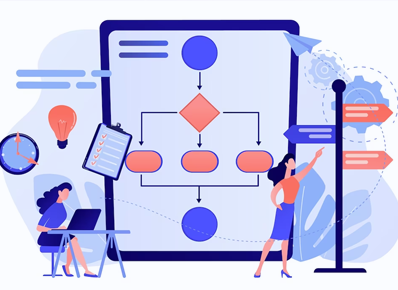In today’s fast-paced world, information overload is a common challenge we face. Whether it’s in the workplace, academia, or our personal lives, we are constantly bombarded with vast amounts of data and content. In order to effectively navigate through this sea of information, a structured and efficient approach is essential. This is where information mapping comes into play. In this blog, we will explore the concept of information mapping, its benefits, and how it can revolutionize the way we organize and communicate information.
What is Information Mapping?
Information Mapping is a methodology that provides a systematic way of analyzing, organizing, and presenting information. It was developed by Robert E. Horn in the 1960s and has since gained widespread recognition as a powerful tool for information management. The key idea behind Information Mapping is to simplify complex information by breaking it down into smaller, manageable units called “chunks.” These chunks are then organized in a hierarchical structure, making it easier for readers or users to comprehend and locate the information they need.
Benefits of Information Mapping:
1. Enhanced Clarity: By structuring information into discrete chunks, information mapping improves clarity and eliminates ambiguity. This approach ensures that each chunk conveys a specific idea or concept, making it easier for readers to understand and absorb the information.
2. Improved Comprehension: Information Mapping enables readers to quickly scan and navigate through information. The hierarchical structure allows users to focus on specific sections of interest, saving time and effort. This leads to improved comprehension and retention of information.
3. Increased Efficiency: One of the primary advantages of Information Mapping is its ability to streamline workflows. By organizing information in a logical and coherent manner, it becomes easier to create, update, and distribute content. This efficiency boost is particularly beneficial for technical documentation, training materials, and standard operating procedures.
4. Consistency and Standardization: Information Mapping promotes consistency in the way information is presented. By using predefined templates and guidelines, organizations can ensure that their content adheres to a uniform style and format. This consistency not only enhances the professional appearance of documents but also facilitates ease of use and reduces user confusion.
Implementing Information Mapping:
To leverage the benefits of Information Mapping, organizations can follow a few key steps:
1. Analyze and Chunk: Start by analyzing the information you want to convey and break it down into smaller, meaningful chunks. Each chunk should represent a single concept or idea.
2. Organize Hierarchically: Arrange the chunks in a hierarchical structure, with main categories at the top and subcategories beneath them. This helps establish logical relationships and facilitates easy navigation.
3. Use Visual Aids: Enhance the readability and understanding of your content by incorporating visual aids such as diagrams, tables, and bullet points. These elements provide a visual representation of complex information, aiding comprehension.
4. Maintain Consistency: Develop a style guide and template to ensure consistency across all documents. This includes guidelines for headings, fonts, colors, and other formatting elements. Consistency fosters familiarity and helps users navigate content more effectively.
Conclusion
Information Mapping is a powerful technique that revolutionizes the way we organize and present information. By structuring content into manageable chunks and employing a hierarchical approach, we can enhance clarity, comprehension, and overall efficiency. Whether it’s creating technical documentation, training materials, or communicating complex ideas, Information Mapping provides a structured framework to transform information overload into accessible and user-friendly content. Embracing Information Mapping can bring significant benefits to individuals and organizations alike, enabling them to communicate effectively in today’s information-driven world.

